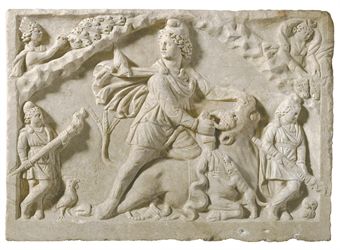From the Daily Mail today:
Thank Heavens for Snow Angels! How a group of Christians got through to help stranded drivers hours efore the emergency teams arrived
- Motorists stranded on A23 towards Brighton for up to 13 hours
- But more than 30 Plymouth Brethren turned out to lend a helping hand
- Airports and railways also hit during traffic chaos
Pity the poor souls out there on the highway to hell.
Cars were skidding into ditches or ploughing into snowdrifts … truckers were forced to abandon jack-knifed lorries … people were wrapped in blankets and shivering against the cold.
For up to 13 hours, motorists were stranded on the A23 towards Brighton when a few miserable inches of snowfall turned the road into a skating rink.
But – praise the Lord – salvation was at hand. For the only True Grit that seemed to work was the resolve of a modest group of Christian evangelists, undaunted by the chaos.
They became ‘Angels of the A23’ by working until dawn to help desperate motorists who must have wondered if hell would freeze over before they were rescued.
More than 30 Plymouth Brethren, as they are called, turned out in a fleet of trucks and four-wheel drive vehicles to tow cars to safety, care for shivering casualties and dispense that most quintessentially English of comforts – hot tea and Bakewell tarts.
Yesterday they were hailed as ‘snow saviours’ by those stuck for hours at Handcross, a few miles below the end of the M23 in West Sussex. ‘They were absolutely brilliant,’ one driver said. ‘It would take the council a week to organise something like this. They were angels and everyone was really grateful to see them.’
The Plymouth Brethren is a 200-year-old religious fellowship group without structured hierarchy or formal membership.
Among those on the rescue mission was Mark MacIntyre, who works in the medical supply industry.
He initially arrived around teatime to find his nephew, who was among those stranded.
Yesterday he said: ‘When I got up here I realised the severity of the situation and organised the others.
‘The road obviously hadn’t been gritted, or the snow was too much, and there were cars stuck as far as you could see. The snow was just blowing across the road and was gradually turning to ice, making it really treacherous.
‘There were about 30 of us with seven 4x4s. It was a kind of rapid response unit … we were on the scene within about 45 minutes.
‘One of the Land Rovers we have has the facilities to make tea and coffee and had plenty of supplies on board, so we were dishing those out to the police as well as people who were stuck in their cars.
‘Everyone was really grateful. A hot drink can mean a lot when you are stuck outside at night.
‘By the time we left at about 4.30am the snow ploughs seemed to be on top of the situation.’
Alas, the Brethren couldn’t reach all parts of the country yesterday.
Despite Highways Agency teams working at ‘full capacity’ through the night, dozens of stranded Sussex drivers bombarded the internet with complaints that they never saw a gritter or a snow plough.
The chaos caused by Britain’s worst spring freeze for 27 years spread rapidly across the country. As well as the roads, airports and railways were also hit, bringing most of the south east to a standstill. All Eurostar rail services were suspended.
Although snowfall in isolated patches reached 4.7inches, the worst-hit areas of Sussex and Kent experienced only a couple of inches. But thanks to the fact that the snow did not settle but turned to ice as temperatures plummeted as low as -3C, it became unusually treacherous. The AA was expected to have attended more than 15,000 calls by the end of last night – almost double the normal rate. Guernsey and Jersey airports were closed. The Channel Tunnel shut for six hours, causing huge delays on the M20 in Kent. …
The story is also mentioned briefly in the Guardian. The Telegraph has a picture of another group of the Brethren shovelling snow away from the entrance to the doctor’s surgery at Stow in the Wold.
Well done, Mr MacIntyre, and the Plymouth Brethren. I don’t know whether these are open or exclusive brethren, but the service rendered was very timely, and well done, and Christ was honoured in it.





